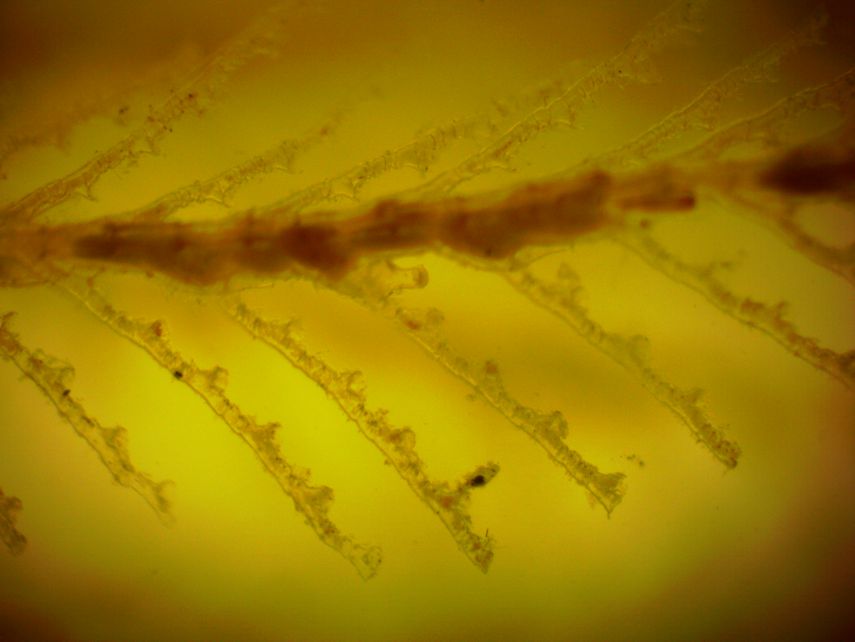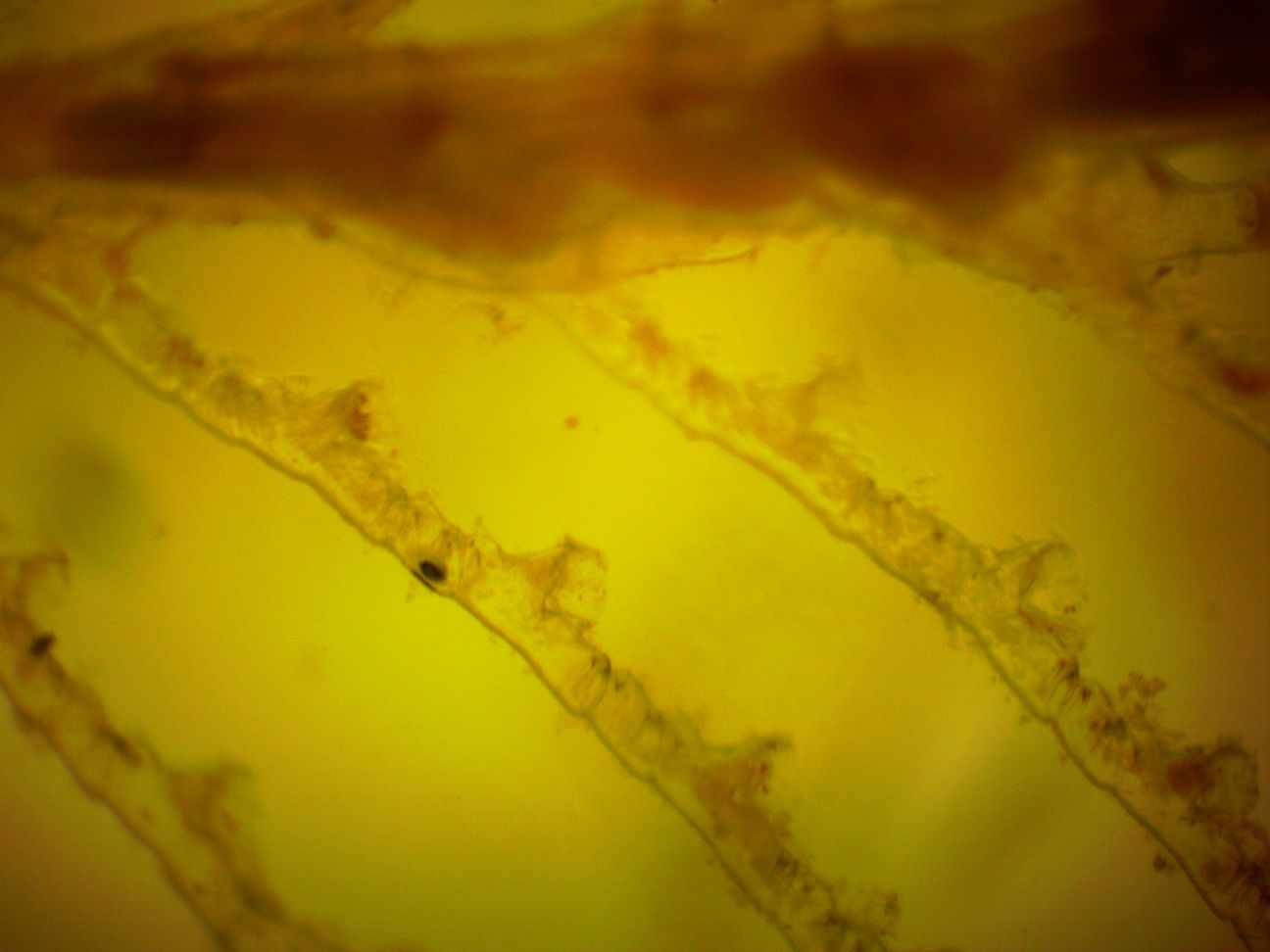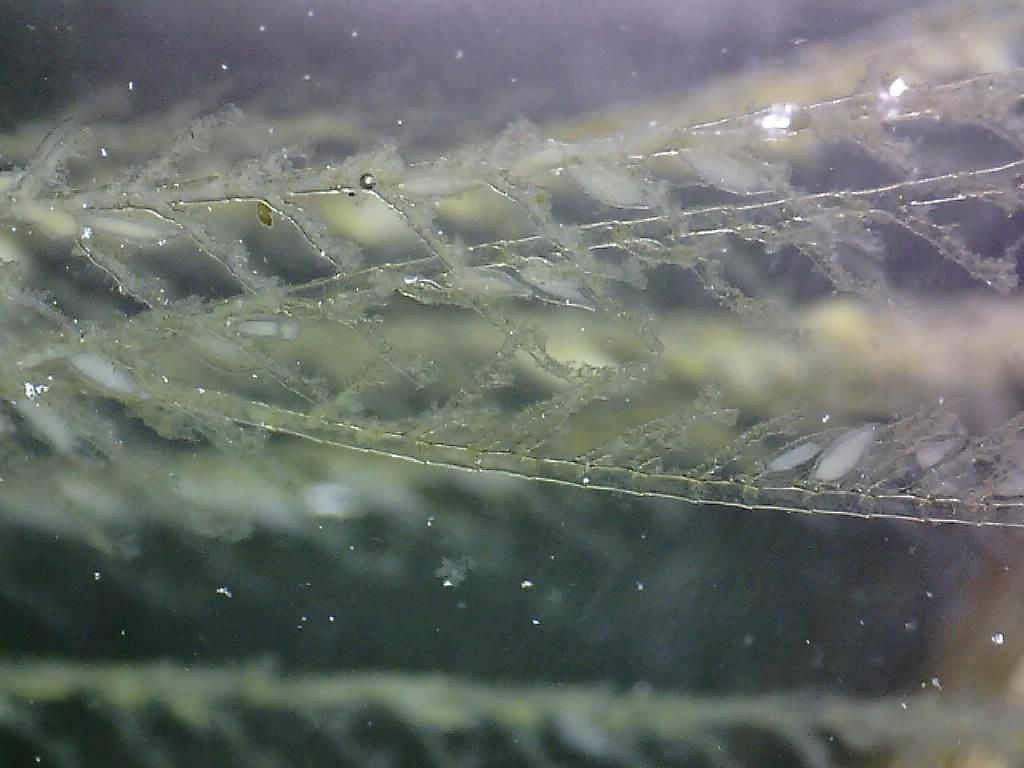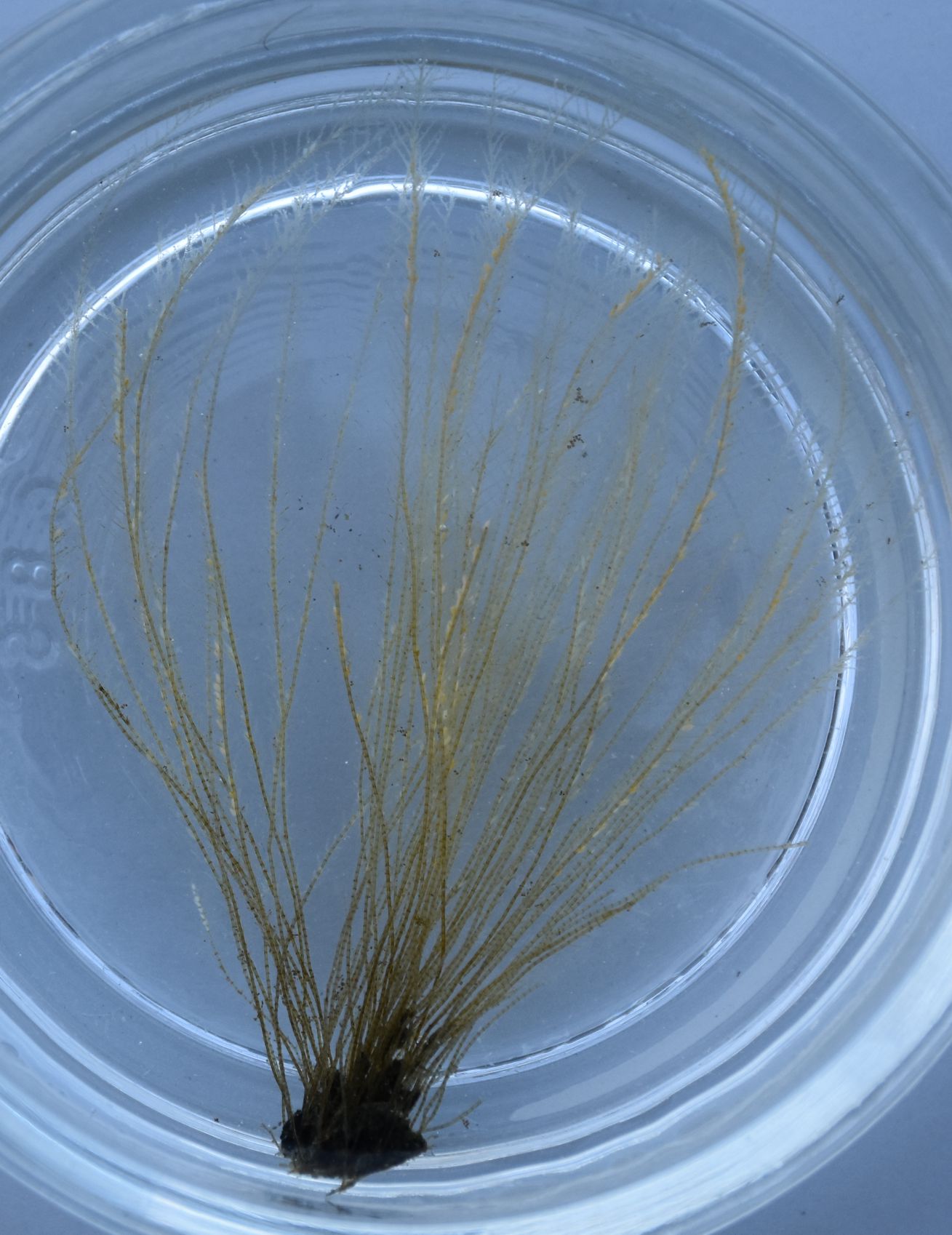Description: This benthic, colonial, feathery-shaped hydroid has hydranths enclosed by a true hydrotheca, but the hydrotheca is not large enough to cover the entire hydranth when it is contracted, and it does not have an operculum. The hydranths are only on one side of the colony branches, and attach directly to the branches rather than having their own distinct stalks (photo). It has about 3 small nematophores associated with each feeding polyp (photo), which articulate with the branch they are attached to (so they are movable). Plumularia does not release its medusae (photo) but does release planula larvae. This species has no hydrothecae on the main stalks, but some of the medusae are attached there so gonozooids must be there (photo). On the branches (hydrocladia), it has polyps on every other segment (internode), but the constrictions forming the internodes are not strongly demarcated with annular ridges (photo). Colony to 5 (15) cm tall.
How to Distinguish from Similar Species: Of common featherlike hydroid colonies,Aglaopheniais larger and has nematophores which do not articulate and so are not movable, plus has distinctive corbulae. Abietenaria inconstans has feeding polyps on both sices of its branches plus has opercula. Obelia dichotoma has hydranths on individual distinct stalks.
Geographical Range: Cosmopolitan; Alaska to California on the American Pacific coast.
Depth Range: Intertidal to 133 m.
Habitat: Attached to rocks or floats; common on kelp holdfasts or stipes.
Biology/Natural History:
The nudibranch Dendronotus
albus has been seen on and may feed on these hydroids.
| Return to: | |||
| Main Page | Alphabetic Index | Systematic Index | Glossary |
References:
Dichotomous Keys:Carlton, 2007
Kozloff, 1987, 1996
General References:
Harbo,
2011
Kozloff,
1993
Lamb
and Hanby, 2005
Morris
et al., 1980
Ricketts
et al., 1985
Scientific Articles:
Meretta, Ezequiel, Pablo Genzano, and Gabriel Nestor, 2015.
Epibiont
community variation on two morphologically different hydroid
colonies: Amphisbetia
operculata and Plumularia
setacea (Cnidaria, Hydrozoa). Marine Biology
Research 11:3
pp 294-303
Schuchert, Peter, 2014. High genetic diversity in the hydroid Plumularia setacea: a multitude of cryptic species or extensive population subdivision? Molecular Phylogenetics and Evolution 76: pp 1-9
Web sites:
General Notes and Observations: Locations, abundances, unusual behaviors:

This closeup of the hydrocladia (branches) shows the individual theca,
and the inconspicuous constrictions that put the polyps
onto every other section of the branches.

This even closer view shows the small articulated nematophores
attached to each polyp

The whitish attached medusae
can be seen in this photo. Planula larvae are released from
these
medusae.
Authors and Editors of
Page:
Dave Cowles (2015): Created original page
CSS coding for page developed by Jonathan Cowles (2007)
Salish Sea Invertebrates web site provided courtesy of Walla
Walla University
